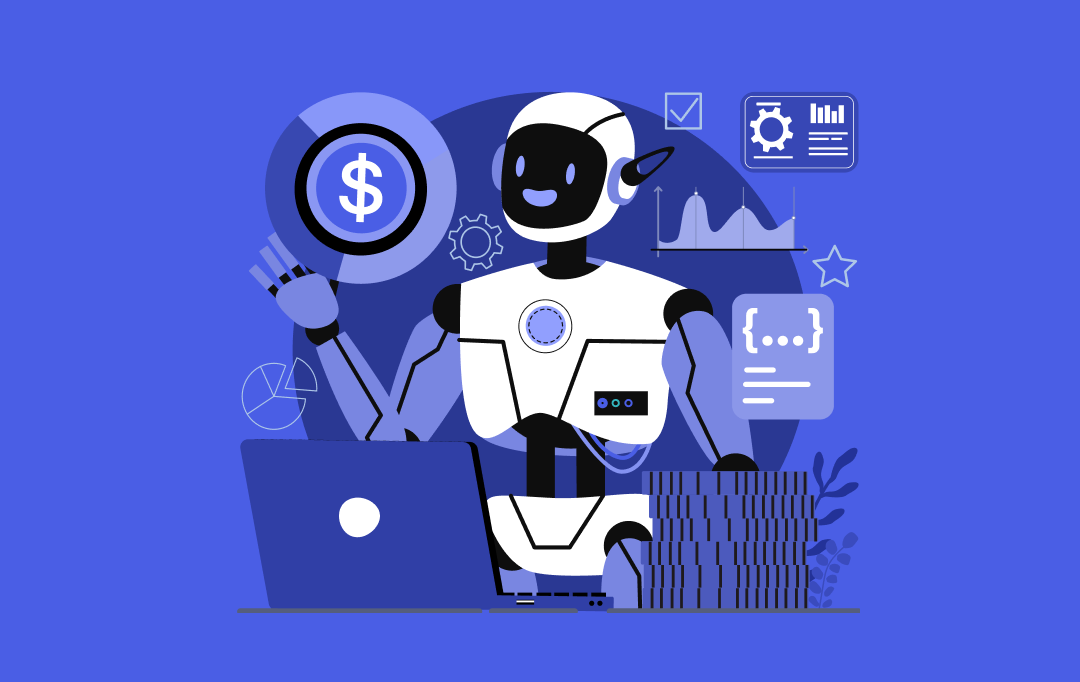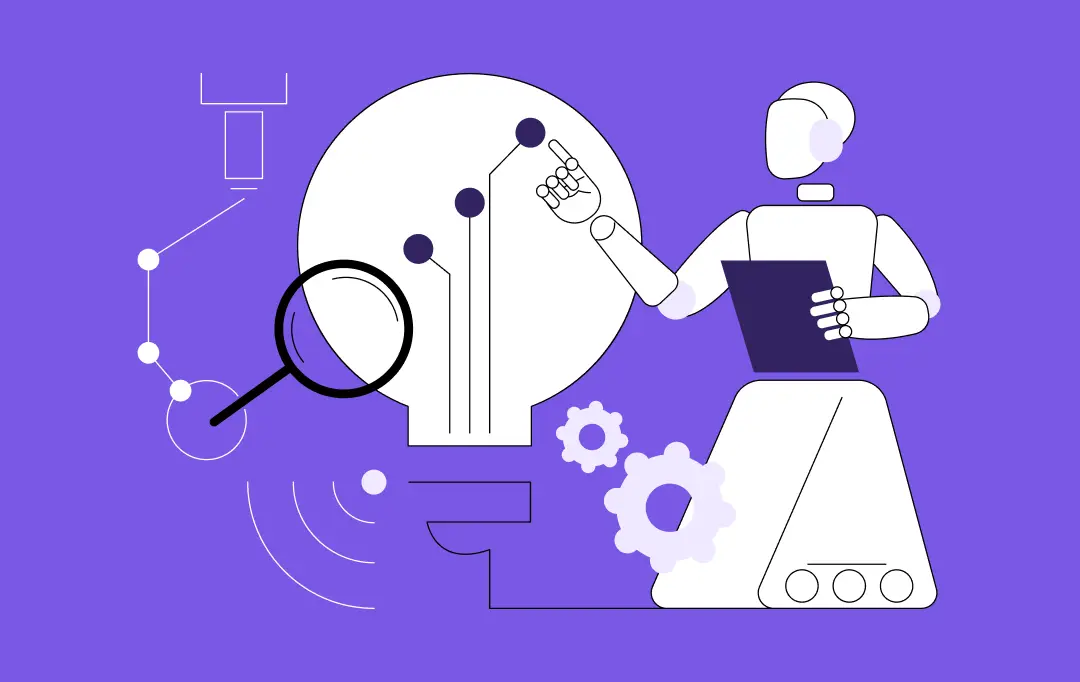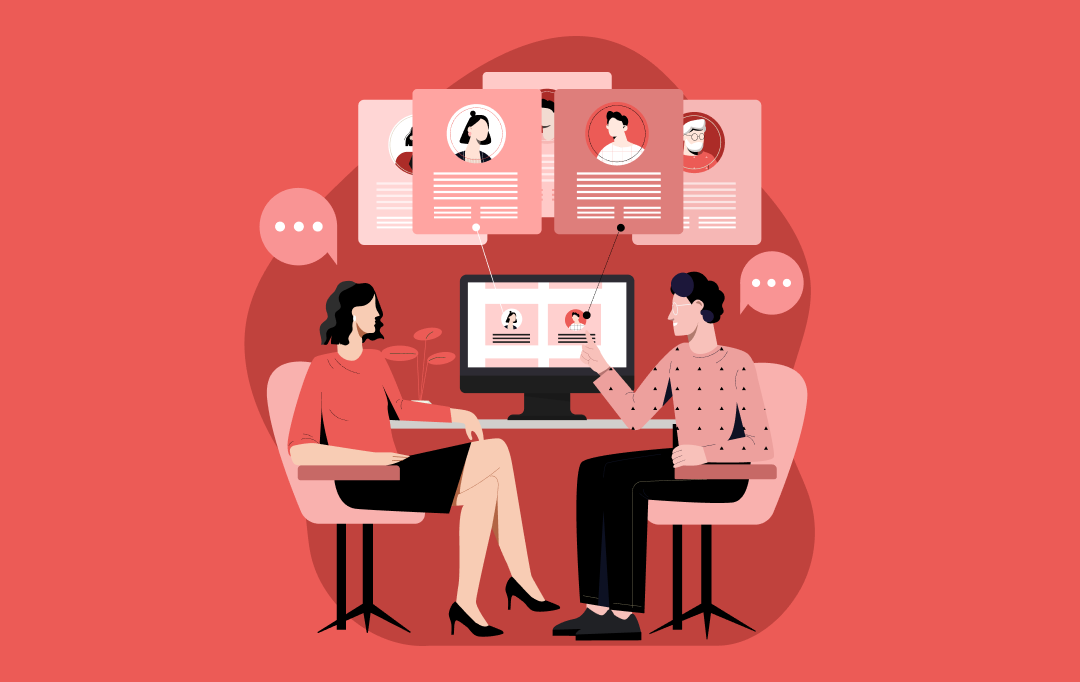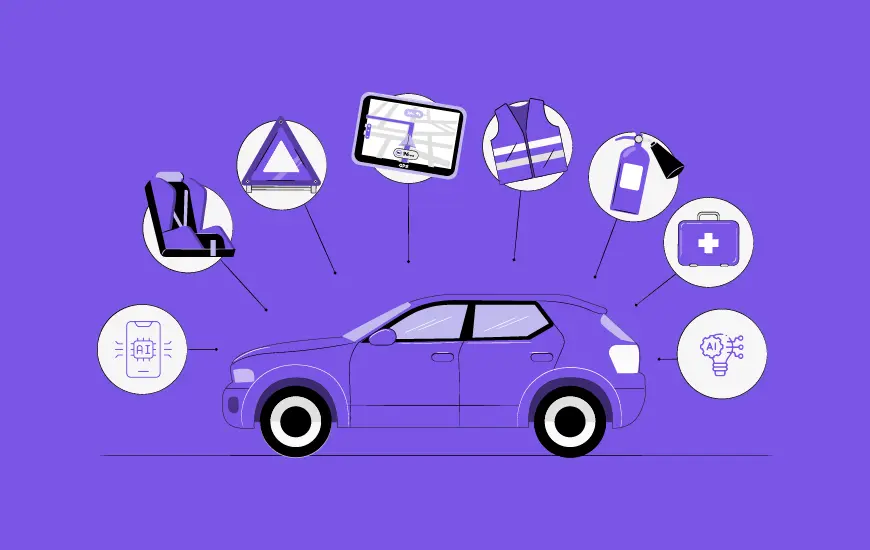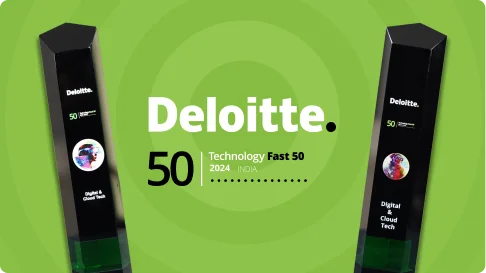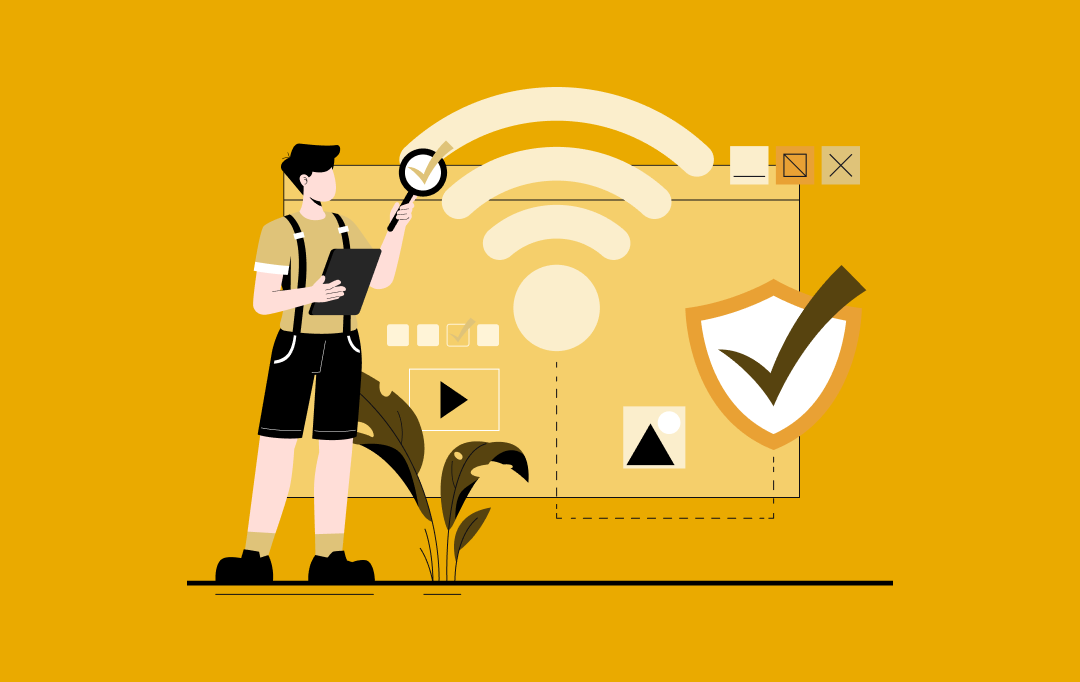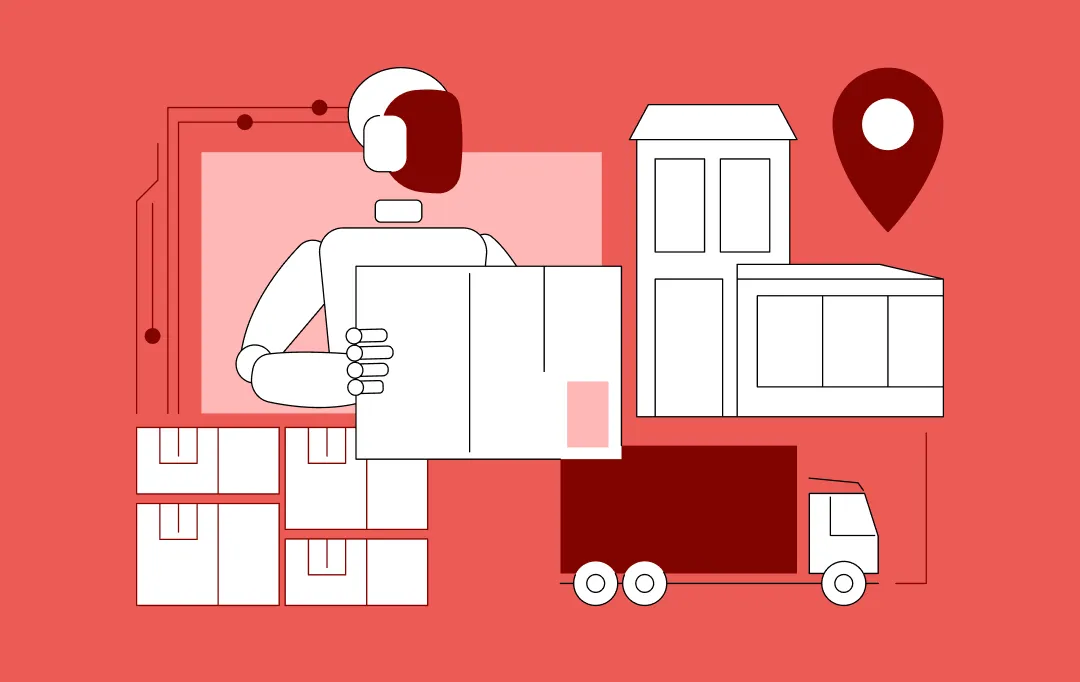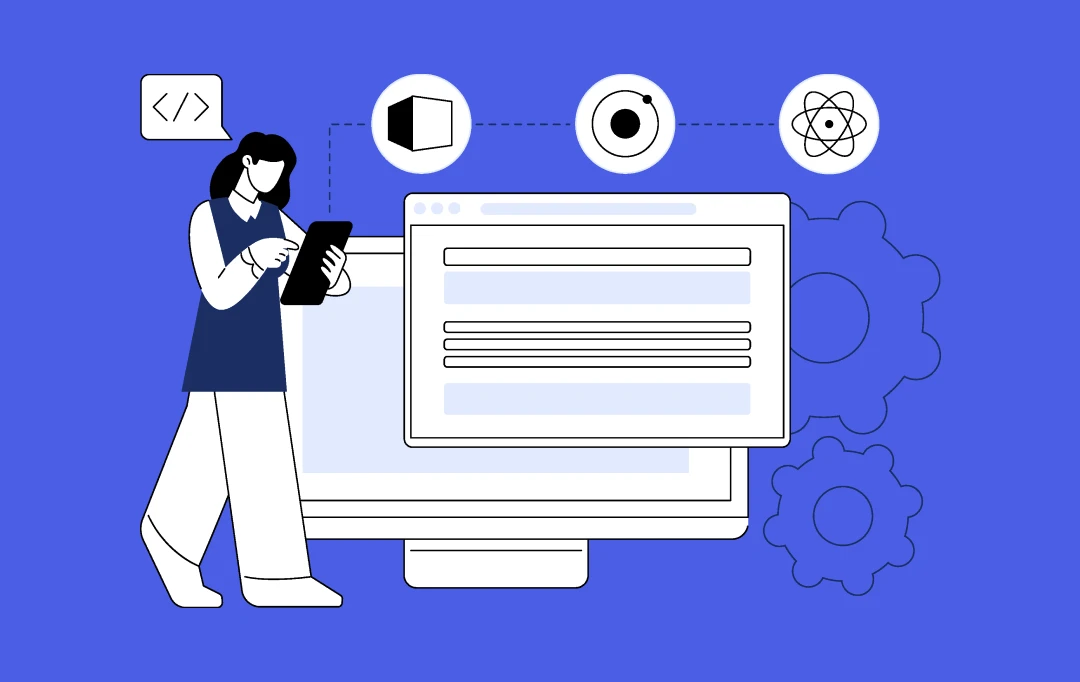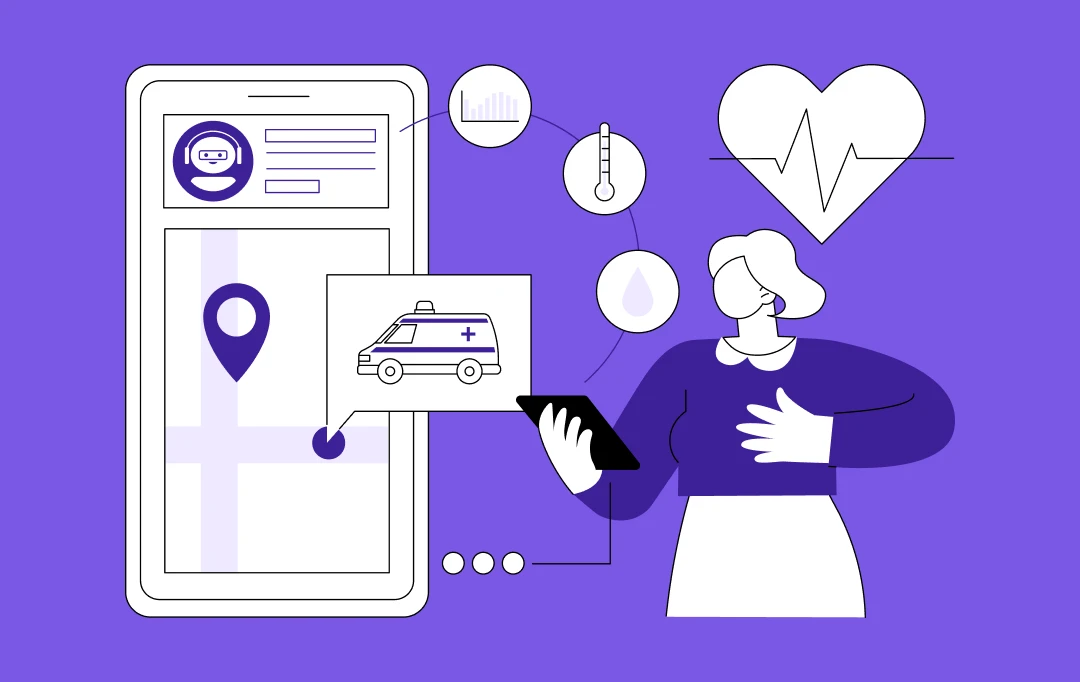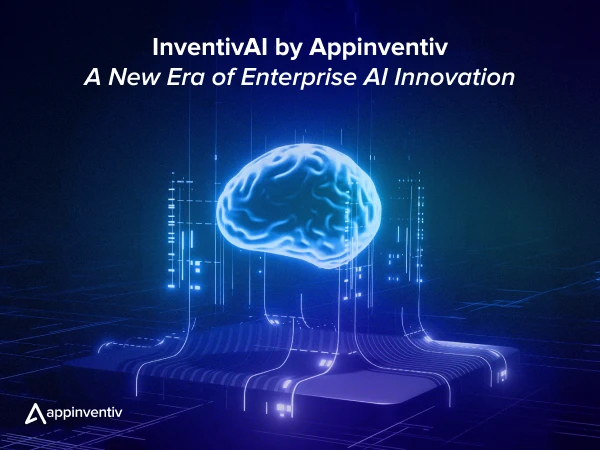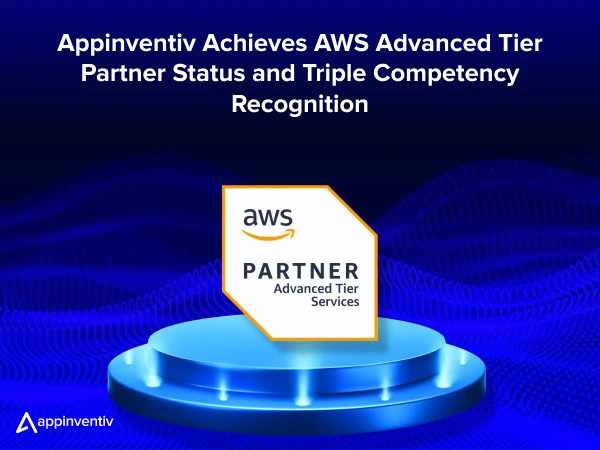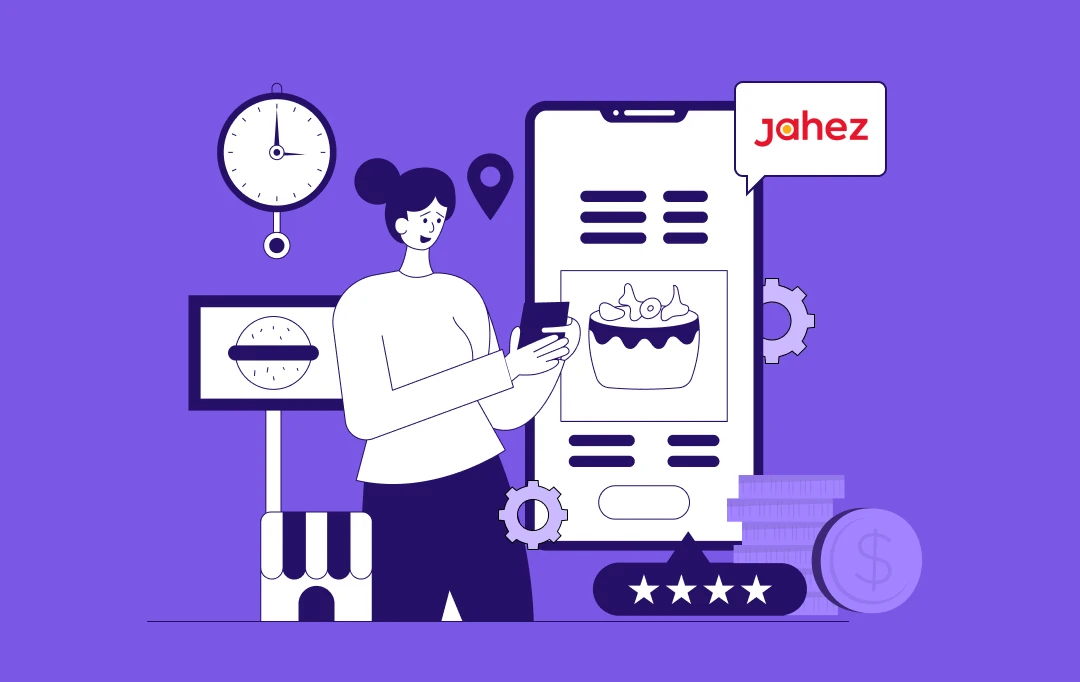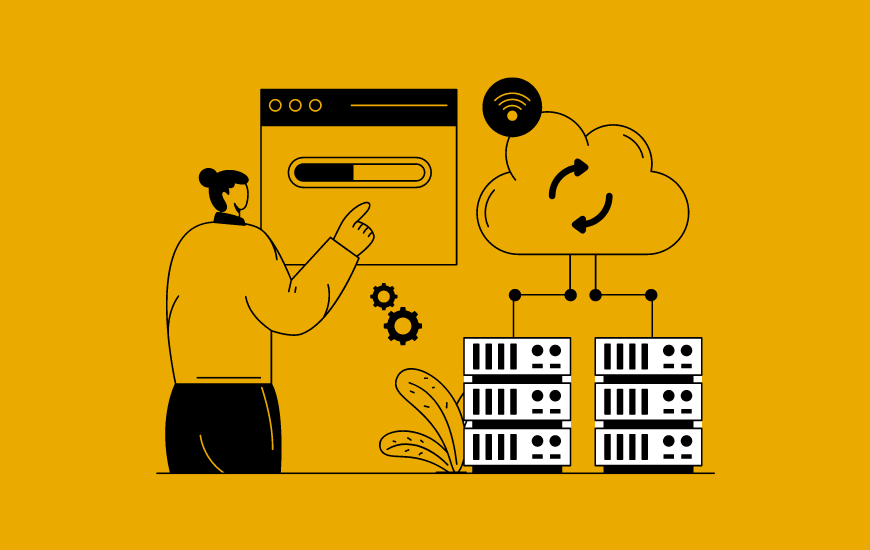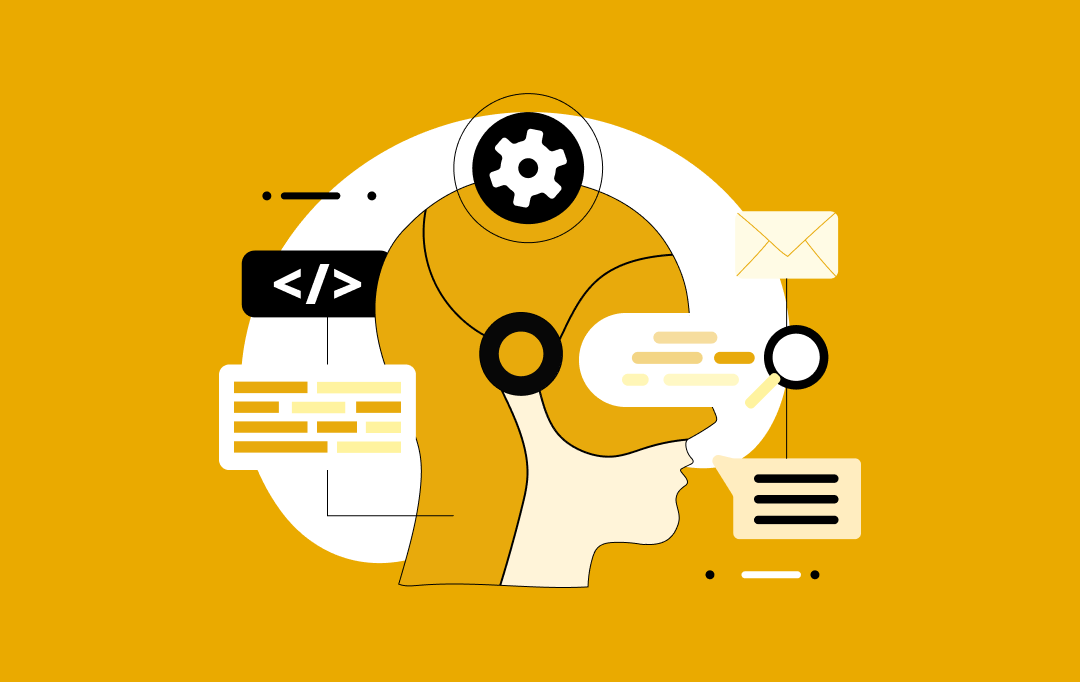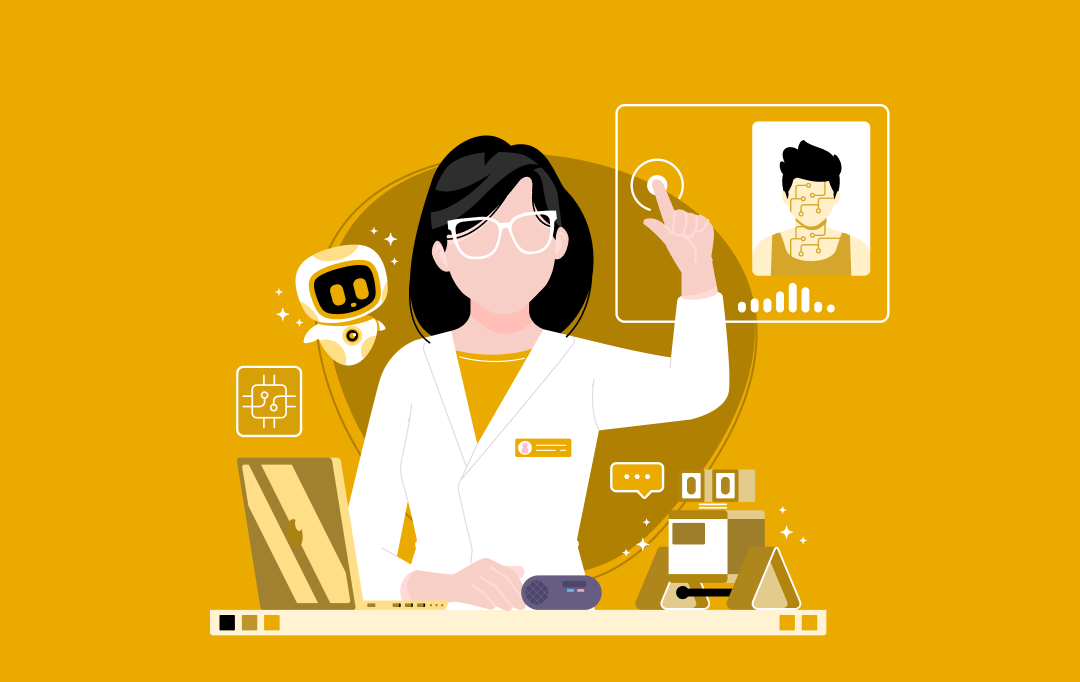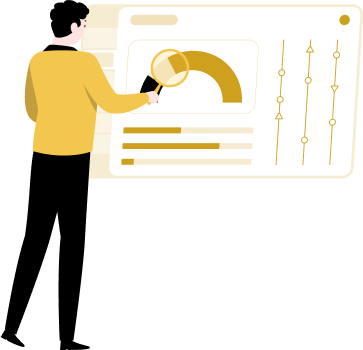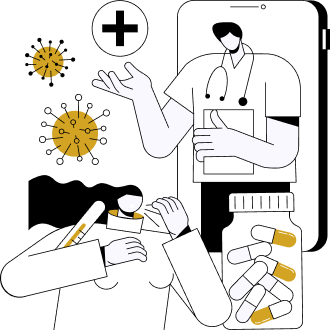- 11 Transforming Applications of AI in the Telemedicine Industry
- 24/7 Virtual Assistance
- AI-Assisted Diagnostics in Imaging
- Mental Health Support
- Faster Disease Detection
- AI in Tele-Rehabilitation
- Personalized Treatment Plans
- Predictive Analytics for Preventive Care
- Remote Monitoring and Management
- AI-Powered Virtual Triage
- Telesurgery and Robotic Assistance
- Administrative Automation and Workflow Efficiency
- Key Benefits of AI-Powered Telemedicine
- Improved Accessibility
- Reduced Burden on Healthcare Systems
- Efficiency and Scalability
- Costs and Time Saving
- Enhanced Decision Making
- Future of Telemedicine in Healthcare
- Implementation Challenges of AI in Telemedicine and How to Overcome Them
- Data Privacy and Security Concerns
- Integration with Legacy Systems
- Bias and Accuracy of AI Models
- Explainability and Transparency
- Ensure the Ethical Implementation of AI in Telemedicine with Appinventiv
- FAQs
- Q. Why is telemedicine the future of the healthcare industry?
- Q. How is AI used in telemedicine?
- Q. What is the cost of AI-powered telemedicine platform development?
- Q. How much time does it take to build an AI in a telemedicine solution?
Key takeaways:
- AI is transforming telemedicine by enhancing real-time diagnostics, predictive analytics, and personalized interventions, shifting healthcare from reactive to proactive care models.
- AI speeds up disease detection, reducing diagnostic times significantly and enabling early intervention, which is crucial for conditions like strokes and cancer.
- AI-powered telemedicine enhances healthcare accessibility, particularly for remote or underserved populations, while also improving healthcare system efficiency through automation of tasks like triage and appointment scheduling.
- The integration of AI in telemedicine is set to grow rapidly, with the global digital health market expected to reach $258.25 billion by 2029, revolutionizing hybrid healthcare by seamlessly combining digital and in-person care.
“In the future, healthcare will be delivered where the patient is, not where the clinic sits.”
That future is already here, and AI is making it more intelligent and accessible than ever before. Let’s explore how.
Chronic ailments like heart disease, cancer, respiratory disorders, and diabetes are prevalent worldwide, accounting for over 70% of deaths in the US alone in 2023 (Source: CDC). Even more concerning, these illnesses are increasingly affecting younger populations. Many of these deaths are preventable with timely access to personalized and preventive care.
This is where AI in telemedicine emerges as a critical solution.
AI-powered platforms bridge the care gap through real-time diagnostics, predictive analytics, and individualized interventions. They shift telehealth from reactive to proactive care models, capable of preventing serious conditions before they escalate.
From reducing diagnostic times from 20 minutes to just 30 seconds to powering virtual assistants that now handle 26% of telemedicine interactions, artificial intelligence is not just enhancing remote healthcare—it is redefining it.
As a result, the integration of AI in the telehealth market is skyrocketing, with digital health entrepreneurs already tapping into its vast opportunities.
What does this mean for you? It represents a significant transformation where AI-enabled telehealth solutions create new monetization models and redefine healthcare delivery.
Still unsure about the transformative role of AI in the telemedicine industry? This blog will help you uncover 11 revolutionary ways in which AI is transforming telemedicine, and underscore the imperative to spearhead the next digital revolution in healthcare.
Let our experts help you enhance accuracy and patient engagement with tailored AI driven telemedicine platforms.
11 Transforming Applications of AI in the Telemedicine Industry
AI-powered telemedicine platforms have come a long way, from making video calls with doctors to detecting chronic diseases and beyond. AI-powered telemedicine platforms achieve maximum efficiency when combined with robust telehealth EHR integration capabilities that synchronize patient data in real-time. AI is taking telemedicine to a whole new level, making virtual care smarter, faster, and more personalized than ever before. Let’s explore ten exciting ways AI is transforming the telemedicine experience.
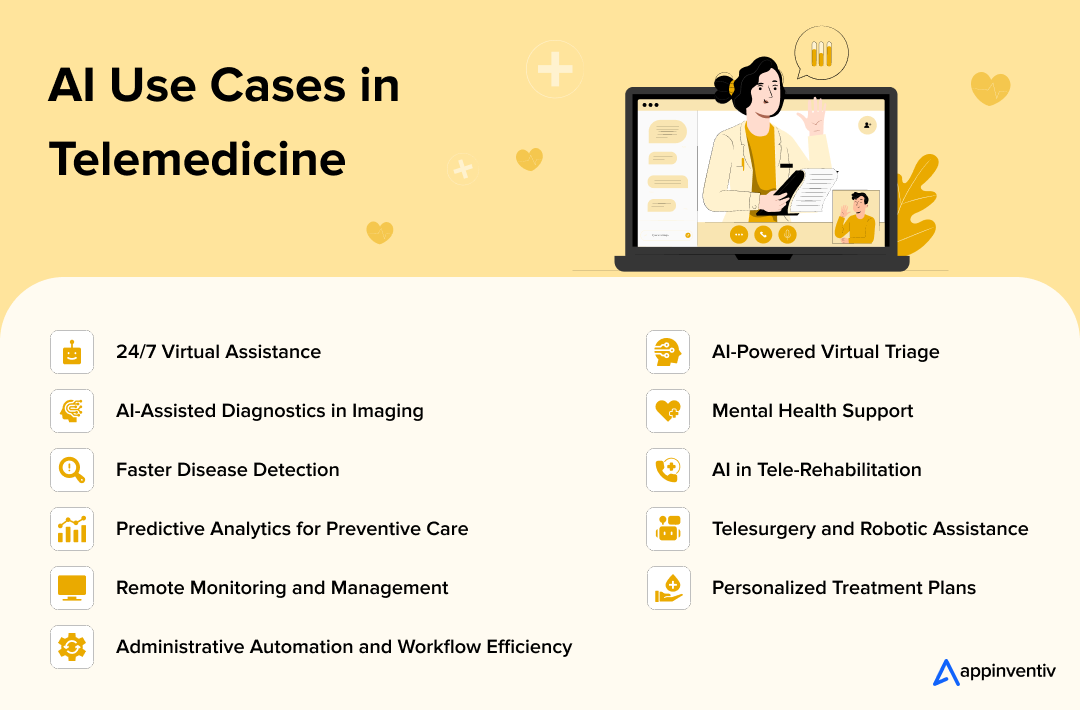
24/7 Virtual Assistance
Need urgent medical advice at 2 AM? Don’t worry! AI is in action around the clock. AI-powered telehealth solutions provide preliminary consultations and answer health-related queries anywhere, anytime.
AI virtual health assistants and chatbots can also guide patients through intake forms, answer administrative questions, and help schedule appointments—streamlining the entire patient journey before the clinician even joins the session. This not only improves patient experience but also reduces administrative burden for healthcare providers.
Example: Your.MD, also known as Healthily, is an AI-driven telemedicine platform that provides personalized health information around the clock. During the COVID-19 pandemic, the platform witnessed a rapid rise in users seeking immediate health guidance.
AI-Assisted Diagnostics in Imaging
Gone are the days when disease diagnosis relied solely on expert eyes. A 2024 study revealed that AI algorithms achieved an overall diagnostic accuracy of 52.1% across various medical imaging tasks (Source: Nature). This highlights the potential of AI in healthcare in assisting radiologists and improving patient outcomes.
Increasingly, AI-powered diagnostic tools are being clinically validated and, in some cases, FDA-approved AI solutions in healthcare are used for remote care settings. AI in the telehealth systems can analyze X-rays, CT scans, and even wound images with high accuracy, enabling providers to diagnose conditions like pneumonia or wounds remotely and efficiently.
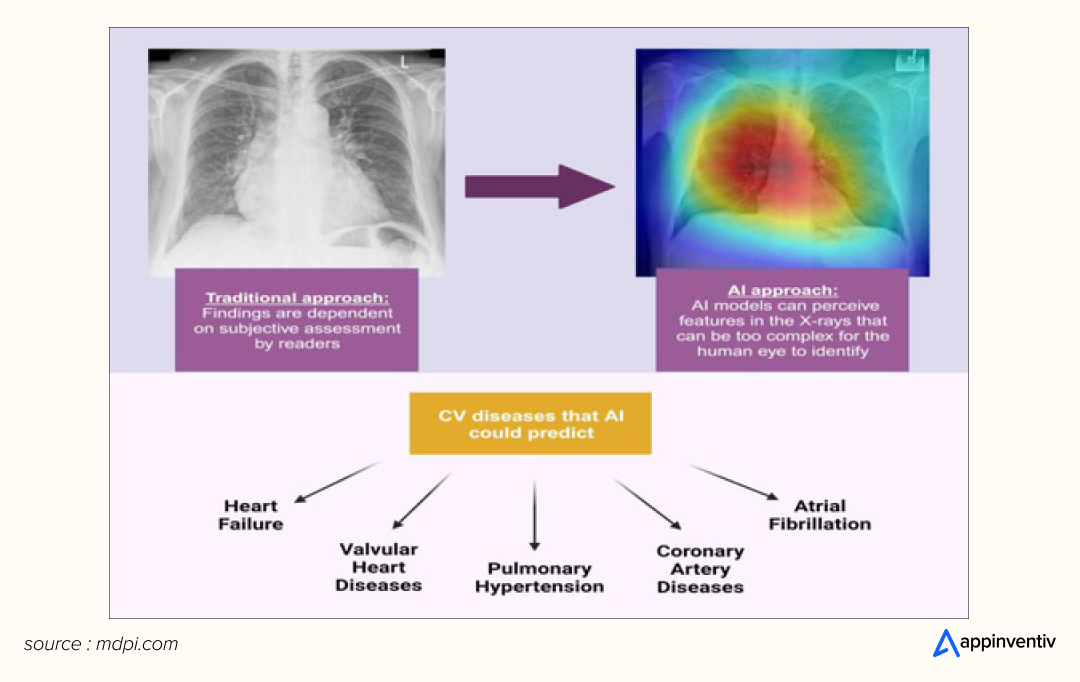
Example: AliveCor’s KardiaMobile, a portable AI-powered ECG device, can detect heart conditions like atrial fibrillation (AFib) via telemedicine. This allows patients to send their heart readings remotely to healthcare providers for immediate feedback, diagnosis, and treatment recommendations.
Mental Health Support
In telemedicine, AI facilitates mental health care through AI-powered chatbots and virtual therapy sessions, aiding in the diagnosis and management of conditions like depression and anxiety. These tools deliver timely, accessible support in a comfortable and user-friendly manner.
AI-powered mental health apps can now monitor patient moods, analyze speech patterns, and adapt recommendations in real time, providing ongoing, personalized support. For instance, some tools use natural language processing to detect changes in patient behavior or mood, alerting providers when a more urgent intervention may be needed.
Example: Woebot provides cognitive behavioral therapy techniques to users seeking mental health support. The AI-driven chatbot connects with users, helping them identify negative thought patterns and offering personalized coping strategies. AI for telepsychiatry makes mental health support more accessible, especially for those who can’t access traditional therapy due to time, cost, or location constraints.
Faster Disease Detection
It is not only the accuracy that matters in healthcare; time matters equally. In fact, time is life in times of emergencies, which can mean the difference between life and loss. AI-powered telemedicine systems can analyze patient data swiftly to detect conditions like strokes or heart attacks. Not to mention, early detection of fatal ailments like cancer or heart disease means timely treatment and better survival rates.
Some AI-powered apps now allow patients to self-test for certain conditions (such as urinary tract infections or arrhythmias) at home, with results analyzed and flagged for clinician review, bringing diagnostics directly to where the patient is.
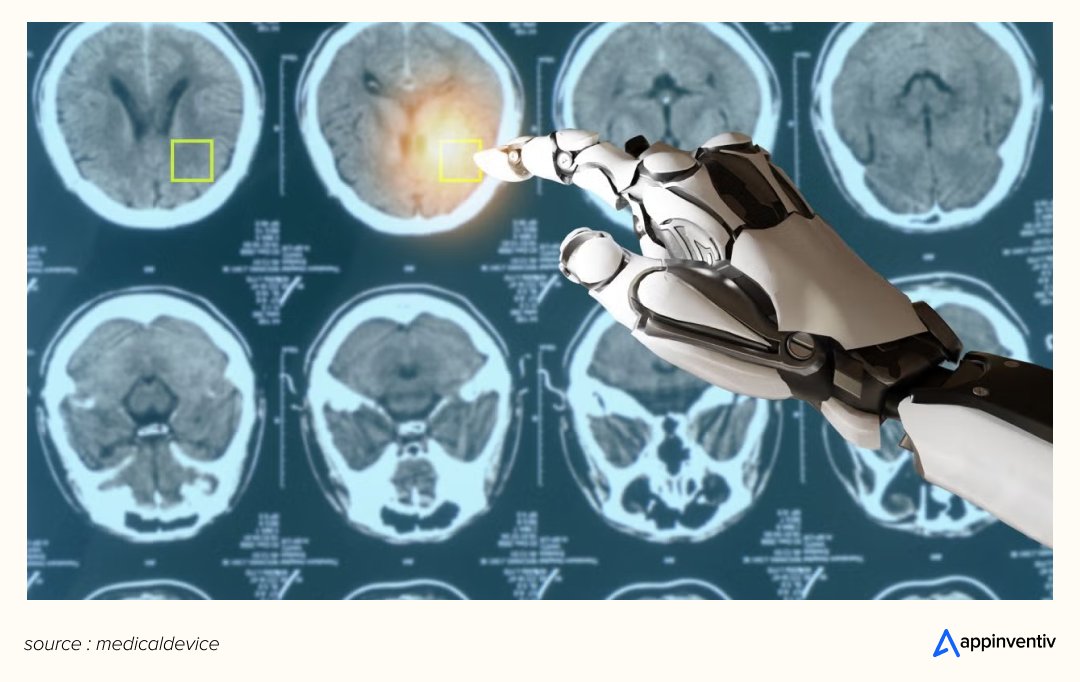
Example: Optellum, a lung precision care platform, integrates with hospital systems to provide remote risk stratification of lung nodules. This helps detect lung cancer early during AI-powered remote consultation or after remote CT scans.
AI in Tele-Rehabilitation
Rehab doesn’t always need a clinic visit anymore; AI-powered telemedicine platforms are bringing it home. Virtual physiotherapy platforms now use AI to create personalized exercise plans and track patient progress remotely. These smart systems give real-time feedback, helping patients stay on track and engaged throughout their recovery.
For instance, AI-enabled computer vision can assess patient movements during physical therapy exercises, providing corrective feedback and ensuring that patients perform their routines safely and effectively at home. This is especially valuable for those with limited mobility or access to in-person care.
Example: Flok Health’s AI physio assistant, “Kirsty,” helps reduce NHS waiting times by guiding patients through therapy remotely with clinical precision. How? The platform delivers at-home rehab, evaluates patient performance remotely, and adapts treatment plans without in-person appointments.
Personalized Treatment Plans
The one-size-fits-all approach has quickly become obsolete in the medical world. This is the time of personalized care. This is where AI truly shines and creates tailored treatment plans by analyzing a patient’s health history, genetics, lifestyle, and other vital data.
Advanced AI platforms can now synthesize data from electronic health records, wearable devices, and even genetic information to recommend the most effective treatment options for each patient. This level of personalization helps clinicians avoid ineffective therapies and deliver better outcomes.
The increasing demand for personalized care is well reflected in its growing market segment, which is projected to reach $500 billion by 2027, a significant jump from $300 billion in 2023.
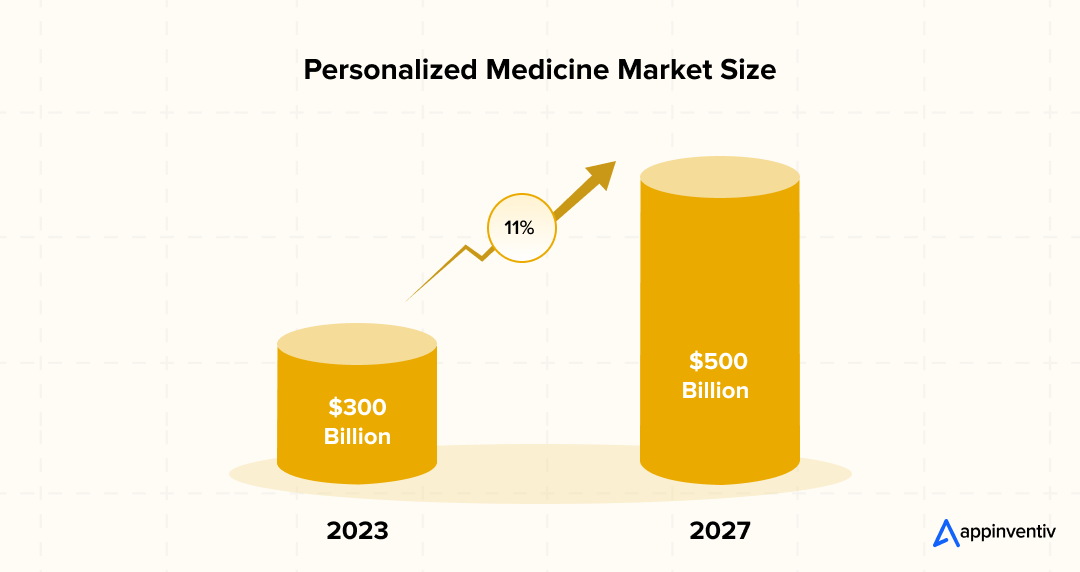
Example: Kaiku Health is an AI-enabled telemedicine platform that collaborates with over 30 hospitals across Europe. The platform’s AI algorithms analyze patients’ data to personalize treatment plans, alert caregivers to anomalies, and facilitate early interventions.
Predictive Analytics for Preventive Care
We all believe in the axiom, “Prevention is better than cure.” Thanks to AI, which has shifted our efforts from reactive to preventive. How? AI for telehealth trends analyzes patterns in patients’ medical histories and lifestyle data to predict underlying health risks before they turn severe. This proactive approach enables early intervention of chronic conditions and helps manage population health more effectively.
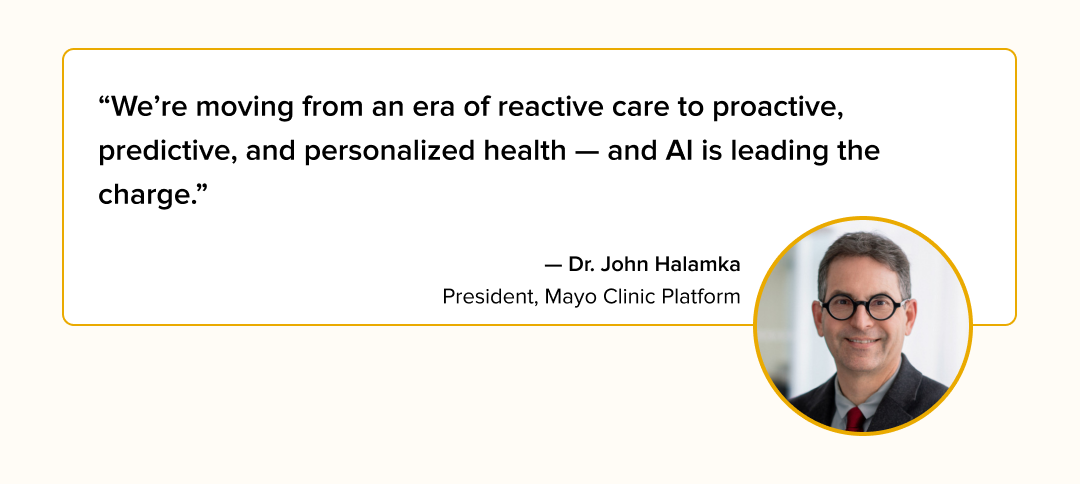
Example: AI-driven telemedicine platform, Babylon Health, provides predictive analytics based on a patient’s symptoms and medical history. Through telehealth consultations, Babylon’s AI can predict potential health issues (like diabetes, hypertension, etc.) and suggest preventive measures to reduce the risk of serious conditions.
Remote Monitoring and Management
Remote monitoring and management of chronic diseases like lung cancer, diabetes, hypertension, COPD, etc., is another remarkable use case of AI in telemedicine. AI-powered wearables and telehealth platforms enable real-time tracking of vital signs, detect anomalies, adjust treatment plans in real time, and alert caregivers.
AI-powered remote patient monitoring (RPM) is revolutionizing chronic care by connecting smart devices, such as blood pressure cuffs, glucose meters, and ECG monitors, to telemedicine platforms. These devices stream data continuously, allowing AI algorithms to detect subtle changes and alert care teams before problems become critical.
For instance, computer vision can be used in senior homes to detect fall risks, and voice analysis can monitor for signs of depression. This helps medical professionals to take timely interventions, minimize complications, reduce hospital admissions, and improve quality of life.
Example: Appinventiv developed DiabeticU, an AI-driven platform that helps transform chronic disease management, particularly diabetes. DiabeticU integrates wearable devices with AI to provide real-time monitoring of blood sugar levels.
It offers personalized care plans based on an individual’s health data, adjusting recommendations for diet, exercise, and medication as needed. This proactive, data-driven approach helps patients better manage their condition and prevents complications by alerting both the patient and healthcare providers to any potential risks.
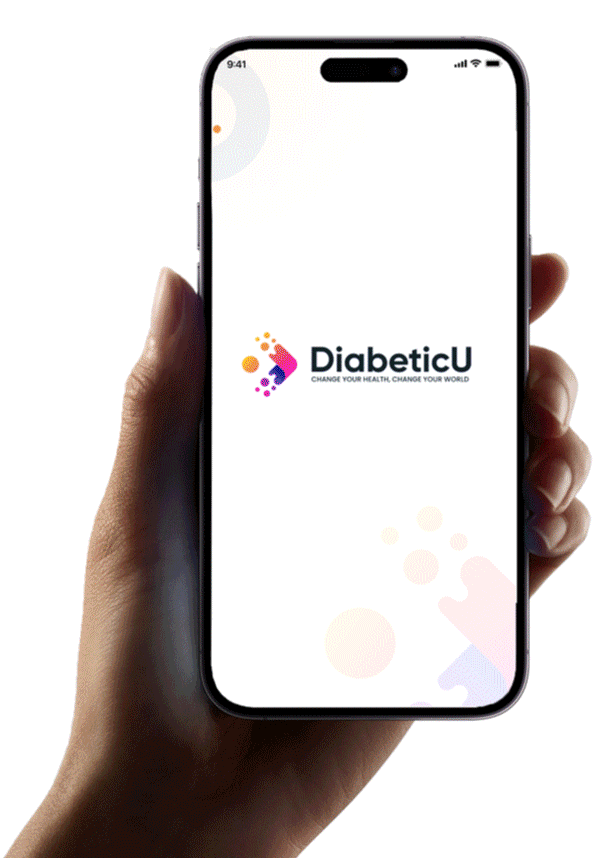
AI-Powered Virtual Triage
AI in healthcare and telemedicine helps prioritize patient care based on urgency. This ensures critical patients receive timely care while optimizing healthcare providers’ workflows. This AI application in telemedicine proves exceptionally valuable in times of any battle, natural catastrophe, or pandemic. This aids caregivers in sorting and allocating treatment according to the urgency of their need for care and maximizes the number of survivors.
AI triage tools can ask patients symptom-specific questions, analyze risk factors, and recommend the most appropriate care pathway – making them ideal for integration into an urgent care app with AI-powered triage capabilities.
Example: Ada Health, an AI-driven triage system, interacts with patients via mobile applications and asks detailed questions about their symptoms and medical history. Based on this information, it recommends personalized care pathways, such as seeking immediate medical attention or opting for home care options.
Telesurgery and Robotic Assistance
AI-driven surgical robots, combined with telemedicine, allow specialists to perform or guide surgeries remotely. These systems enhance precision, reduce human error, and enable top-tier surgeons to operate across geographical barriers. This is truly a breakthrough for patients in underserved or rural areas.
As AI and robotics continue to evolve, telesurgery is becoming more feasible and safer. Advanced AI in telehealth systems can now provide real-time feedback, image recognition, and even automate certain surgical tasks under remote supervision, opening up access to specialized care worldwide.
Example: In June 2024, the Rajiv Gandhi Cancer Institute and Research Centre in Delhi, India, performed cancer surgery via telesurgery. Using the indigenous SSI Mantra robotic system, a surgeon successfully operated on a patient, completing the procedure in just one hour and forty-five minutes. This is a notable reduction from the typical three-hour duration of traditional surgery.
Administrative Automation and Workflow Efficiency
Beyond clinical applications, AI in telehealth is transforming the administrative side of telemedicine. Generative AI tools can now automate coding for diagnoses, draft referral and insurance documents, and even correct inaccurate patient information in real time. This reduces the paperwork burden on clinicians, speeds up billing, and minimizes errors, helping healthcare systems operate more efficiently and scale their services.
Example: Teladoc Health, one of the largest telemedicine providers globally, has integrated AI-powered administrative automation into their platform that works seamlessly during and after virtual consultations. This includes automating repetitive tasks like creating clinical documentation, recommending appropriate screenings, diagnostics during virtual visits, and providing real-time transcription services.
Now that we know the transformative use cases and examples of AI in telemedicine, let’s dive deeper and understand how these AI use cases in telemedicine benefit the medical world.
Also Read: The uses and benefits of artificial intelligence in clinical trials
Key Benefits of AI-Powered Telemedicine
Artificial intelligence in telemedicine is redefining how healthcare is delivered. This breaks geographical barriers, makes healthcare delivery accessible to all, automates routine processes, empowers caregivers with data-driven insights, and does a lot more. Let’s know the details of the transformative benefits of AI-powered telemedicine platforms:
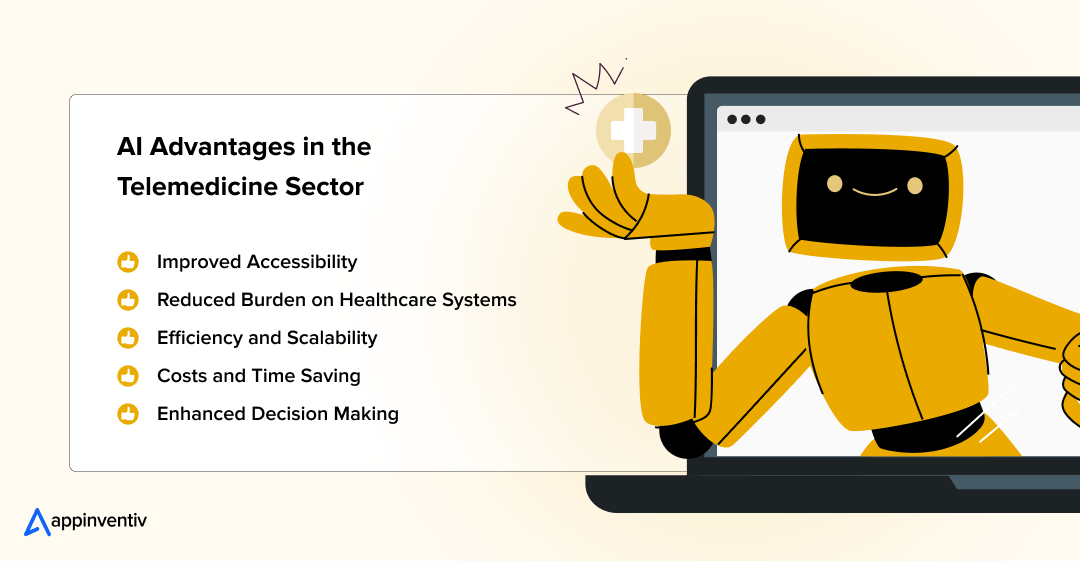
Improved Accessibility
AI for telemedicine plays a powerful role in eliminating geographical barriers and improving accessibility for those who can’t visit physical clinics due to time, cost, or location constraints. This ensures that quality care reaches every corner of the world, even to those who reside in rural or underserved areas.
Reduced Burden on Healthcare Systems
AI and ML in telemedicine are known to automate complex tasks like triage, diagnostics, appointment scheduling, and follow-ups. This eases the workload on healthcare providers and reduces avoidable hospital crowding.
Efficiency and Scalability
AI for telemedicine enables healthcare systems to scale their services without proportionally increasing manpower. Telehealth use cases like virtual consultations, automated documentation, and real-time analytics help medical units streamline operations and expand service reach as per evolving patients’ demands.
Costs and Time Saving
The role of AI in telemedicine is widely visible in various aspects, such as shortening diagnosis times, enhancing accuracy, reducing the need for unnecessary tests, and cutting down administrative overhead. In fact, recent evidence shows how telemental health cost effectiveness is becoming a key advantage in remote care models, enabling mental health services to be delivered more affordably and at scale. These AI efficiencies in telehealth help save significant costs and time for both patients and providers
Also Read: How much does it cost to build a healthcare app
Enhanced Decision Making
AI telehealth offers clinicians real-time insights and predictive analytics that help them make faster, smarter decisions. And the result is obvious – more personalized treatment plans and better patient outcomes.
Interested in building an AI-powered telemedicine app, but not sure how much it will cost you. Then our detailed blog on healthcare app development cost is a must-read for you.
Future of Telemedicine in Healthcare
The future of telemedicine is here, and it is smarter, faster, and more patient-centric than ever. What started as a temporary fix during the pandemic has now become a new norm in the healthcare industry, redefining the way healthcare is delivered. We are no longer confined to video calls between doctors and patients; rather, we are talking about a more intelligent, connected, proactive, accessible, and tech-driven ecosystem.
One of the biggest game changers in this healthcare transformation is AI. For instance, ECG monitors, connected inhalers, and remote blood pressure cuffs constantly feed data into AI systems. These devices, when connected with 5G, VR-based physical therapy, smart wearables, and Internet of Medical Things (IoMT) in telemedicine, make real-time patient monitoring possible and personalized, even from miles away. It means no more lag and no more delays in treatment.
According to NIH, the use of telehealth has stabilized at 38 times higher than before the pandemic. And it is not stopping there. Future models will integrate AI even deeper, making it possible for systems to learn from real-time patient data continuously and recommend highly tailored care interventions, often before the patient even realizes they need them.
No wonder, in the coming years, AI telehealth will become an inseparable part of hybrid healthcare, which will seamlessly blend digital and in-person care.
In short and straight terms, the global digital health market is projected to grow from $197.88 billion in 2025 to $258.25 billion by 2029 (Source: Statista), and telemedicine will play a crucial role in scaling care, reducing system burden, and closing the accessibility gap.
So far, it is evident that the future of healthcare is not a distant dream; it is already here, and AI telehealth is leading the way.
The global digital health market is projected to skyrocket from $197.88 billion in 2025 to $258.25 billion by 2029.
Tap into this thriving market with an AI-driven telemedicine app
Implementation Challenges of AI in Telemedicine and How to Overcome Them
No doubt, the benefits of AI-powered telemedicine are limitless. However, leveraging these benefits is not so easy, as implementing AI for telemedicine presents several challenges. But worry not! With the right strategies, you can easily overcome those hurdles and ensure a smooth road to AI adoption in telemedicine.
Data Privacy and Security Concerns
Challenges: One of the most pressing challenges when integrating AI for telemedicine is to ensure patients’ data privacy and security. Since AI in telemedicine trends rely on a vast volume of data, the risk of data breaches is higher.
Solution: To ensure sensitive data privacy and security of telehealth platforms, you should implement robust security measures like encryption techniques and adhere to strict data protection regulations such as GDPR and HIPAA.
Related Article: HIPAA Compliant App Development: A Complete Guide
Integration with Legacy Systems
Challenges: Integrating artificial intelligence in telemedicine is a complex chore. Why? Many healthcare providers still rely on legacy systems that are incompatible with the latest AI trends. This creates a substantial barrier for the implementation of AI in telehealth.
Solution: Healthcare units should invest in interoperable solutions that facilitate smooth communication between AI tools and existing systems like Electronic Health Records (EHR).
Bias and Accuracy of AI Models
Challenges: AI models are trained using vast data sets collected and prepared by humans. This means there is a high risk of AI models generating biased and discriminatory responses based on certain demographics. This can be a serious concern in telemedicine, where incorrect advice can lead to unequal healthcare opportunities for remote patients.
Solution: Follow responsible AI principles and adhere to fairness and bias mitigation practices while developing an AI telemedicine platform.
Explainability and Transparency
Challenges: Ensuring the transparency of AI telemedicine in healthcare is a pressing concern. Before we count on the AI response, we need to understand the reasoning behind the AI’s decision, especially when making critical decisions like surgery or treatment suggestions.
Solution: Utilize explainable AI that offers interpretable decision-making and clearly explains its decisions through tools like feature importance scores, visualizations, and decision trees.
Related Article: How to Overcome AI Challenges in Healthcare
Ensure the Ethical Implementation of AI in Telemedicine with Appinventiv
As the integration of AI continues to deepen in the telemedicine industry, you must ensure its ethical and explainable implementation so that patients may not have to compromise their privacy and fairness.
Appinventiv, a leading healthcare mobile app development company, understands that the key to successful development of AI telemedicine solutions lies in combining innovation with responsibility. Our team of 1600+ tech experts knows what it takes to build a technologically advanced, ethical, innovative, and patient-centered telehealth solution.
You can see the action of our excellence in delivering top-notch telemedicine app development services in some of our healthcare projects, such as Soniphi, Health-e-People, DiabeticU, YouComm, etc.
For instance, our partnership with Soniphi resulted in the development of a healthcare platform that leverages bioacoustics and voice analysis to assess user well-being. By analyzing vocal patterns, the platform can detect early signs of health issues, providing real-time insights to users and enabling them to make informed decisions about their health. This AI-powered solution has shown great potential in the early detection of various conditions, offering a personalized approach to wellness.
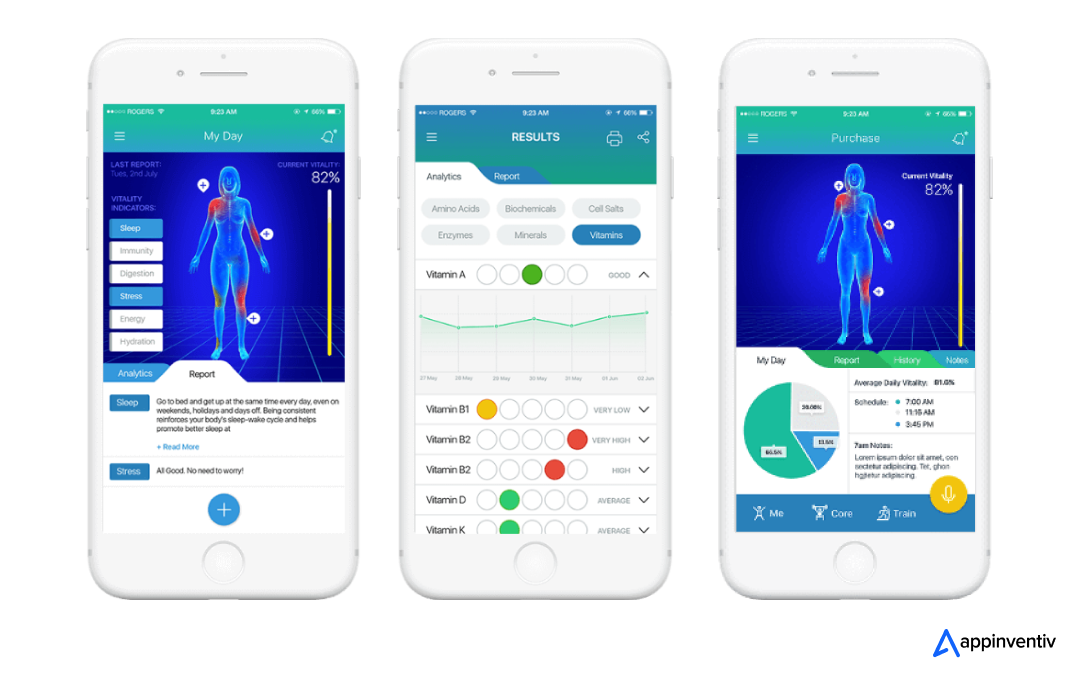
Another example is Health-e-People. We developed this health assessment app that helps consolidate health data from over 200 devices and applications into a user-friendly interface. This integration allows users to monitor various health metrics in real-time, providing a comprehensive view of their condition. The platform also offers predictive and prescriptive analytics, helping users make informed decisions about their health and lifestyle.
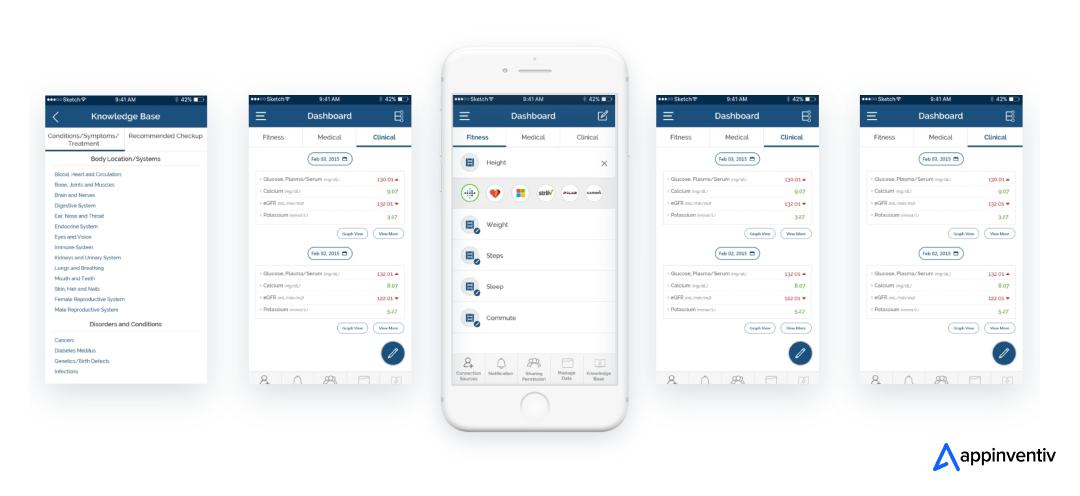
These case studies speak volumes about our unmatched excellence in delivering telemedicine app development services that ensure the development of intelligent, advanced, ethical, and scalable digital solutions.
So, why wait? Get in touch with us now and watch your AI vision come to life.
FAQs
Q. Why is telemedicine the future of the healthcare industry?
A. Telemedicine is shaping the future of healthcare by making medical services more accessible, efficient, and patient-centric. It eliminates geographical barriers, reduces wait times, minimizes the burden on medical professionals, and supports continuous care, all while minimizing costs and maximizing speed.
Q. How is AI used in telemedicine?
A. AI in telemedicine plays a powerful role. It enables faster diagnoses, personalized treatment plans, and real-time patient monitoring. It supports virtual triage, automates documentation, analyzes vast data sets, predicts health challenges, detects early signs of disease, and does a lot more.
Q. What is the cost of AI-powered telemedicine platform development?
A. The cost of building an AI-powered telemedicine platform depends on multiple factors such as the complexity of features (like video consultations, AI diagnostics, EHR integration), UI/UX design, compliance needs (HIPAA, GDPR), the development team’s expertise, and so on.
On average, a telemedicine platform development cost ranges between $40,000 and $400,000 or more. For instance, building a basic MVP can range between $40,000 and $150,000, while a full-scale solution with advanced AI capabilities can cost around $100,000 to $400,000 or more.
Contact us to get a more precise estimate for AI telehealth app development.
Q. How much time does it take to build an AI in a telemedicine solution?
A. The timelines for building and integrating AI in telemedicine vary based on some critical elements such as the project scope, AI integration depth, feature sets, tech stack used, and so on.
On average, the AI telehealth platform development timeline ranges between 4 months and a year or more. The process includes planning, UI/UX design, development, AI model training, testing, and deployment.
Q. What are the compliance requirements for using AI in telemedicine?
A. AI-driven telemedicine solutions must comply with several key regulations to ensure they meet privacy, security, and operational standards. In the US, the primary compliance requirements include:
- HIPAA (Health Insurance Portability and Accountability Act)
- FDA Regulations
- 21st Century Cures Act
- State-specific Telemedicine Regulations
- GDPR (General Data Protection Regulation)
Q. How secure is AI-driven telemedicine in terms of patient data?
A. AI-driven telemedicine platforms ensure security through data encryption, access control, data anonymization, audit logging, and secure APIs. These measures protect patient data, making platforms compliant and safe for handling sensitive information.


- In just 2 mins you will get a response
- Your idea is 100% protected by our Non Disclosure Agreement.
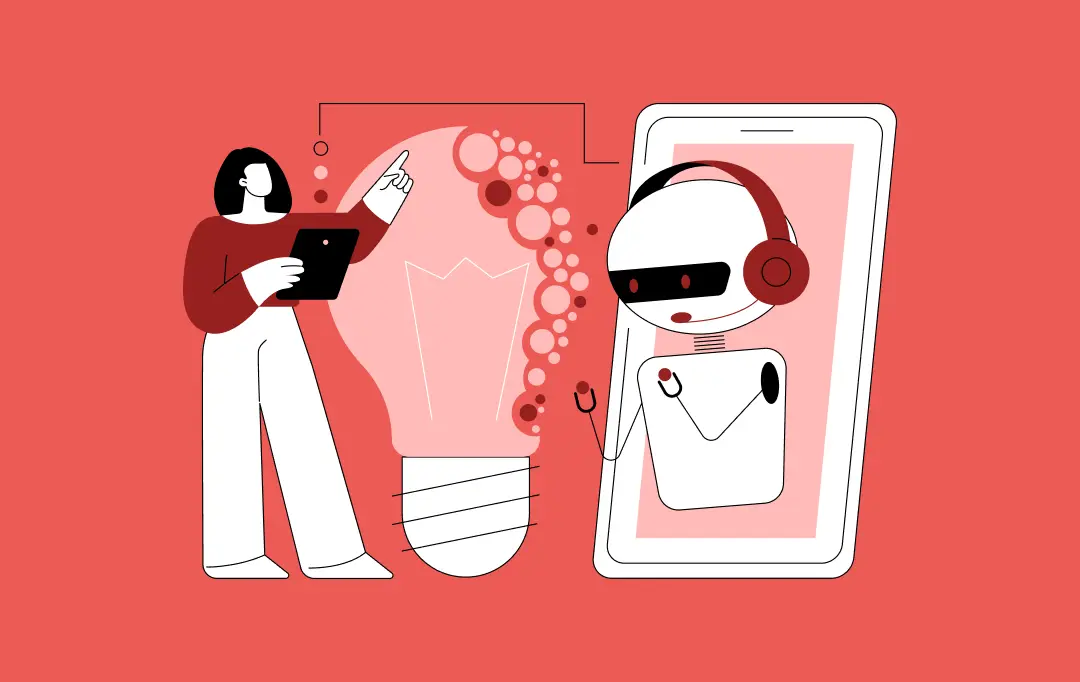
How Much Does It Cost to Build an AI App in Dubai?
Key takeaways: AI app costs in Dubai typically range from AED 80,000 for simple builds to AED 800,000+ for enterprise systems. Dubai is past AI experimentation, and not investing now means catching up later at higher cost. The real budget is driven by data, integrations, architecture, and compliance, not just app features. Hidden costs like…
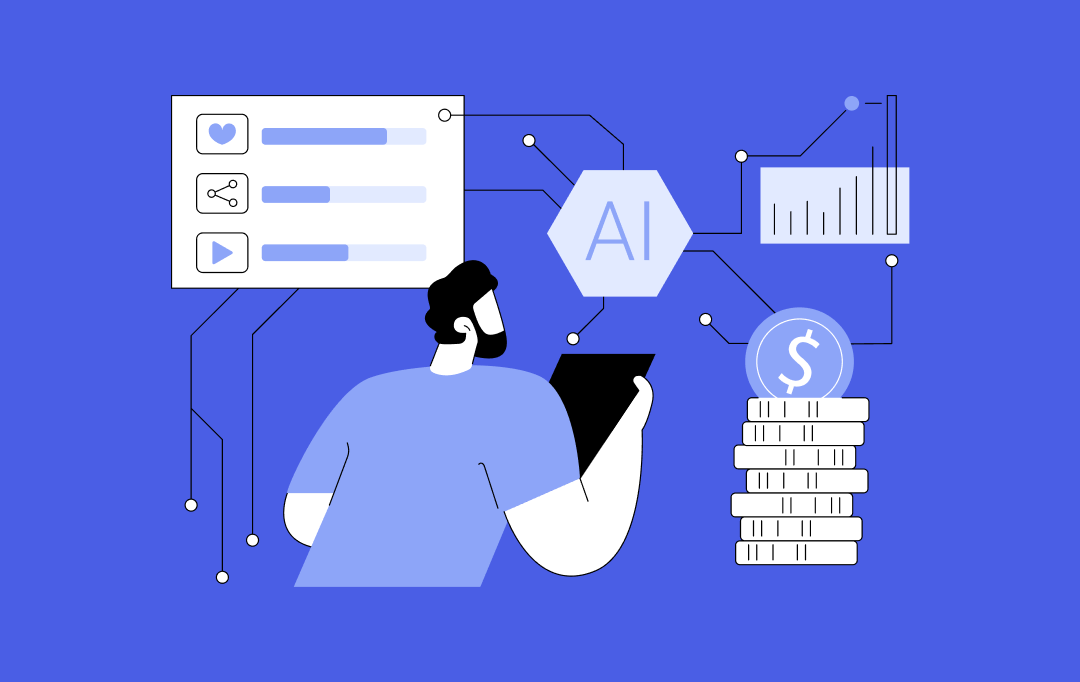
How AI Tokenization is Enabling Secure and Transparent Asset Ownership in 2026
By 2026, AI tokenization has moved beyond early-stage experiments and pilot projects. Tokenizing real-world assets has become a serious commercial strategy for financial institutions, supply chain operators and technology-driven enterprises. A 2025 report by the World Economic Forum in collaboration with Accenture highlights tokenization as a key mechanism for value exchange in modern financial markets.…

13 Ways Generative AI is Transforming the Hospitality Industry
Key takeaways: The most mature applications of Generative AI for hospitality are in guest service, revenue management, marketing, and operations automation. Real value comes from integrating generative AI into hospitality operations and existing PMS, CRS, CRM, and POS systems, rather than using stand-alone tools. Successful programs treat Generative AI in hospitality as a product, incorporating…
